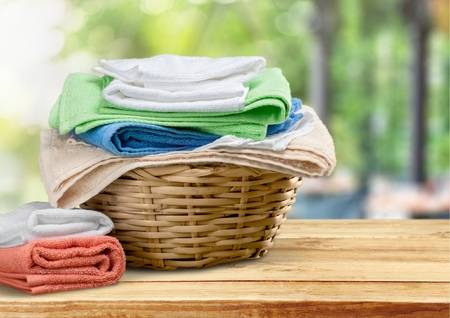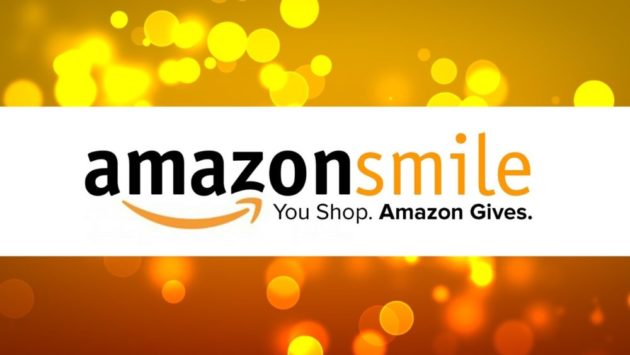Here are 15 easy ways you can incorporate sustainable habits into your daily life to help make your corner of the world a little more green!
We all care about the environment, and even if we don’t bike to work every day or if we enjoy an iced coffee in a plastic cup now and then, it’s important to realize that the small things we do together do help to make a difference.
1. Be Creative in Kicking the Plastic Habit:
SOS: you love iced coffee, but feel guilty about the extra plastic consumption. Compromise by asking for your drink in a warm cup with no lid – you just went from two pieces of plastic to no plastic! If you’re enjoying your drinks in a café, ask the barista if they have reusable cups on hand. Most cafés will, you just have to ask! Take it a step further and make it a habit to keep reusable cups, straws, and utensils in your car for when you can’t resist your favorite drive-thru. Building these habits becomes easier over time and all the sea animals will thank us!
2. Sign-up for OhmConnect
OhmConnect is one of the greatest resources to help you understand your energy usage so you can build smarter habits! Their service helps you use energy when it’s cleanest and rewards you to cut back on energy use when it’s dirty, (aka: when the grid is strained). OhmConnect does this by notifying users of ‘OhmHours’, which are hours of anticipated heavy energy usage. If you cut back during these projected hours, you can earn points, which translates into money!
Call your energy company to confirm if OhmConnect is an approved service, any PG&E, SCE, and SDG&E customers are eligible. Once confirmed, I was rewarded a $10 Target gift card for enrolling! OhmConnect’s interface has plenty of metrics that speak to any analytical heart and break down energy use in a way that’s fun and easy to understand. Not to mention, I’ve found ways to decrease my monthly bill! Literally, sign me up again if you can.
3. Buy in Bulk (Not Talking Costco Here)
I’m talking raw bulk items like oats, rice, flour, pet food or even cat litter! Stores like Sprouts or Frazier Farms offer bulk bins where you can choose to buy exactly the quantity you need to avoid waste. Purchasing in bulk allows these stores to sell goods at a lower price point AND you’re avoiding unnecessary plastic packaging when you buy from bulk bins. Check your local pet stores to see if they offer bulk food or litter options. Your first purchase will be a filled reusable container, and any subsequent purchase you just bring in the reusable container to re-fill!
4. Unplug.
Even when turned off, appliances such as TVs, gaming consoles, toasters, straight irons, etc still draw power. Your phone or watch charger? Those draw power too, even when they’re not in use. Unplugging these appliances will not only help to conserve energy – but it will save you money!
The Department of Energy estimates most appliances account for 5% of our residential energy consumption while in standby mode. While it’s not a large lump sum, unplugging still saves money and it’s worth conserving energy where we can! To make life easy, install power strips that have an on/off switch and just easily flip the switch to turn everything on/off when needed.
5. Start & Go:
One of the biggest myths, that I’m sure we all learned as new drivers, was that we need to let our cars ‘warm-up’ before driving. Thanks to updates in car technology, this doesn’t ring as true as it did 50 years ago. Every time we start our cars, greenhouse gasses are emitted in the form of carbon dioxide. These gasses are a large contributor to climate change and the fewer we release, the better!
Experts recommend that no more than 30 seconds is necessary to warm your engine; even in colder climates. This means we can skip letting our cars idle, which saves us: time, money, and helps our ozone layer out! While we unfortunately cannot help idling in traffic, we can avoid unnecessary idling when starting our cars and after arriving at our destinations. Idling for only two minutes can use the same amount of fuel as driving for a mile; so let’s turn off our engines while scrolling social media or responding to those last few texts to save money and cut our climate a happy break!
(Please use your discretion and factor in the age of your vehicle in extreme weather conditions.)
6. ICE, ICE, LAUNDRY
Join the club of wishing you realized all the benefits of washing laundry on cold cycle years ago! It’s estimated that 75-90% of the energy washers use are generated by warming the water. Washing clothes in cold cycles saves energy, money, and lengthen the life of your clothes! As a bonus, washing on cold helps your items stay vibrant for longer, be less prone to shrinkage, and only cold water can lift gnarly grass, sweat, or blood stains. Did you know warm water actually makes stains set deeper? Yeah, no thanks.
(If you live in colder climates, tap water can reach temperatures below ~40F. When temperatures dip low, some detergents don’t work as well. Always check your clothing for special instructions and wash in warm for any items needing sanitization.)
7. Fix It Clinics
Once upon a Marie Kondo purge, I discovered 4 pairs of shoes in my closet that had various issues and set out to fix them. A simple purchase of $5 shoe glue off AmazonSmile restored roughly $80 worth of my favorite, joy sparking shoes. This got me thinking, how many times have we heard our grandparents say ‘ In my day, I would have fixed that!’ – and really, why don’t we?
Most of our generation finds it easier to recycle or dispose of items – and honestly, most of us don’t know how to repair items (me included). Enter Peter Mui, founder of the “Fixit Clinic” mentality. He brought together a community of trade-experts to share their electronic, textile, and mechanical skills with fellow neighbors to foster the idea of repairing things instead of buying new again – and they’re now popping up all over the country. Give your items a second chance at Second Chance Brewing, they host a clinic on the 2nd Saturday of every month from 1-3pm. Great beer, saving money, and learning skills to carry onto our next generation? Sign. Me. Up!
8. Smile with AmazonSmile:
Amazon hosts a secondary shopping portal known as AmazonSmile. The shopping features and pricing operate just the same as Amazon’s normal site; but when you shop AmazonSmile, the Amazon foundation will donate .5% of your purchase price to a charitable organization of your choice! If you don’t see your favorite non-profit on AmazonSmile, encourage them to sign-up here! If you’re looking for a great non-profit to contribute to, I’d be HONORED if you selected the California Wolf Center as the recipient of your AmazonSmile donation.
9. Reef Safe Sunscreen:
I was shocked to learn that 85% of our coral reefs died before 1999 due to pollution, not global warming. Mounting evidence in recent years has determined Oxybenzone, the active ingredient in most sunscreens, to pose a hazard to human health and our environment. Oxybenzone is a hormone disruptor which can lead to reduced sperm count in men and may contribute to endometriosis in women; it’s also the same chemical that disrupts cellular cycles of coral, ultimately leading to over bleaching and death. WHOAH, that got rough… shiny solution, coming right up!
General rule of thumb: if your sunscreen makes you pasty and white, you’re on the right track with a mineral based sunscreen! With continuous measures being passed, S/O to Hawaii for banning the sale of sunscreens containing oxybenzone, people and companies are stepping up! The Environmental Working Group publishes an annual sunscreen report each year that has plenty of great tips and a list of reef-safe products. If you’re looking to take the guess work out, Tropic Sport has been my go-to – and it’s available off AmazonSmile!
10. Pledge to NOT Use Rodenticide
This one has always hit close to home since we lost a family pet to rodenticide years ago. When we poison rodents, their natural predators often die from secondary toxicity effects of eating a poisoned rodent. The infographic below does a great job of visualizing how far the effects of secondary toxicity spread. Using traps and fostering co-existence with rodent’s natural predators are great alternatives to managing rodents with poison. One of my favorite options is to install an owl box, see the Hungry Owl Project to learn more. They provide options to build or purchase your own owl box and they have some great live owl cams if you want to peek in on these majestic creatures.
11. Score Convenient Reusable Bags – THAT YOU’LL ACTUALLY USE!
Even though we all mean well, why is remembering to grab our reusable grocery bags one of the hardest habits to build?! The answer to all our guilty woes: Baggu Bags! They’re so light and compact that I can easily tuck one into my small purse and have it on hand for last minute items, even while traveling! The prints are fun and the material is durable so that I never worry about them wearing down in my purse. Use it for groceries, as a beach bag, for farmers markets, Target hauls, wet beach towels, anything!
12. Go Green on Bagging Produce
An easy way to reduce single-use plastic consumption is by making the swap to reusable produce bags! I opted for this set on AmazonSmile and it was such a killer deal that I’ve started to get creative in how I use them. The set came with 16 bags, so on top of using them for produce and bulk items (oats, nuts, grains, etc.), I’ve gifted a few and have used them as organizers on hiking trips, in packed luggage, and they’re perfect for the beach!
13. Stop Using Beauty Products with Microbeads.
Facial and body cleansers containing microbeads might be great for exfoliation, but they’re harmful to our environment in more ways than one. These microbeads find their way into our watershed, oceans, and ultimately affect our drinking water and sea life. The FDA agrees and instituted the Microbead-Free Waters Act; in which companies are mandated to stop introducing products with microbeads to market by July of 2019. However, you can switch up your beauty regimen ASAP to make the swap to natural exfoliates.
14. PEER PRESSURE (Make saving the world cool)
Helping the environment is not a one-person job, it’s something that we all need to work together on! So, LET’S MAKE SAVING THE WORLD COOL. Peer pressure your friends, in a good way, to help them build better and more sustainable habits. Be excited to share any eco-friendly tips you have with your friends and don’t shame them if they ask silly questions – instead, encourage their excitement to learn. Start a beach clean-up, host a meatless monday, or If you work in a larger organization- ask your company about ways to make the business more sustainable. You’d be surprised what a difference it can make! I was THRILLED when my company implemented reusable silverware – this is collectively saving 500lbs of plastic trash for our office location alone per year. Little steps can make big changes, it’s all about starting on the right foot.
15. Stay Educated + Vote to Affect Change
While everything on this list are great ways we can help, we need to vote in order to affect powerful change. It’s our responsibility to stay educated on current measures and know what is happening to our parks, oceans, and public land. Voting on bills and measures holds corporate companies and governments accountable for using sustainable products and operating in ways that lessen damage on the environment. Leveraging social media to your advantage is a great way to stay educated in real time. Follow organizations, scientists, and photographers that document and fight for missions you care about. Social media also makes it easier to contact our representatives than ever before – write a letter, email, DM, or RT sharing your public opinion. Try out a few podcasts until you find one that encourages you to think, grow, and take action in preserving our world. We only have one, so we need to do all we can to save it.
From the bottom of my heart, thank you so much for taking the time to read and consider making these changes to help make our world a better place! I would be BEYOND THRILLED if you shared any helpful ideas of your own in the comments, I’m always looking for new and creative ways to be be more green with every day!
PS: A quick list of my favorite organizations and researchers that help me stay up to date are included below – along with the list of sources referenced in creating this piece!
FOLLOW TO LEARN MORE:
Pacific Wild seeks to protect wildlife and their habitat in the Great Bear Rainforest through impactful communications, wildlife monitoring and community-led initiatives that shed light on the natural world. Check out the Pacific Wild Instagram here.
California Wolf Center is dedicated to the return of wild wolves to their natural habitat and to the people who share the landscape with them. The CWC fosters communities coming together to ensure wolves, livestock, and people thrive in today’s world. They’re located in Julian, CA and are an INCREDIBLE volunteer opportunity if you’re interested, just reach out to me if you want to learn more!
Choose Your Current: CURRENTS educates and empowers global citizens to become ocean advocates. They provide the tools for taking action, while raising funds and awareness to help defend, protect, and preserve ocean environments across the globe.
Sea Legacy is on a mission to create healthy and abundant oceans for us, and for the planet.
Ian McAllister: Ian is a co-founder of Pacific Wild. He is an award-winning photographer and author of six books, and his images have appeared in publications around the world. Follow him on Instagram to stay up to date!
Paul Nicklen is a Canadian photographer, filmmaker, and marine biologist who has documented the beauty and the plight of our planet for over twenty years. As an assignment photographer for National Geographic magazine, Nicklen captures the imagination of a global audience.
SOURCES:
Ash, Steven. MARIN COUNTY PEST SPECIFIC IPM PLAN for RATS EXECUTIVE SUMMARY. Marin County, 2010, egovwebprod.marinpublic.com/depts/PK/Main/IPM/Data%20Files/Pest_Specific_Plans/Rat_Plan.pdf.
Center for Food Safety and Applied Nutrition. “Laws & Regulations - The Microbead-Free Waters Act: FAQs.” U S Food and Drug Administration Home Page, Center for Food Safety and Applied Nutrition, www.fda.gov/cosmetics/guidanceregulation/lawsregulations/ucm531849.htm.
Chu, John. “3 Easy Tips to Reduce Your Standby Power Loads.” Energy.gov, 1 Nov. 2012, www.energy.gov/energysaver/articles/3-easy-tips-reduce-your-standby-power-loads.
Environmental Working Group. “EWG's 2018 Guide to Safer Sunscreens.” EWG, 2018, www.ewg.org/sunscreen/report/executive-summary/#.Wtnm6y-ZNR0.
Haereticus Environmental Lab. “Oxybenzone.” Haereticus Environmental Lab, haereticus-lab.org/oxybenzone-2/.
Haereticus Environmental Lab. “Protect Land + Sea Certification – Haereticus.” Haereticus Environmental Lab, haereticus-lab.org/protect-land-sea-certification/.
HealthPost on March 7, 2018. “Say ‘No’ to Plastic Microbeads.” HealthPost, 3 Apr. 2018, blog.healthpost.co.nz/2018/say-no-plastic-microbeads/.
Lobet, Ingrid. “Energy Savings Can Be Fun, But No Need To Turn Off All The Lights.” NPR, 7 Mar. 2017, www.npr.org/sections/alltechconsidered/2017/03/07/518175670/energy-savings-can-be-fun-but-no-need-to-turn-off-all-the-lights.
Mooney, Chris. “The Biggest Winter Energy Myth: That You Need to Idle Your Car before Driving.” The Washington Post, 29 Dec. 2014, www.washingtonpost.com/news/wonk/wp/2014/12/29/the-biggest-winter-energy-myth-that-you-need-to-idle-your-car-before-driving/?utm_term=.522ffe5b50d2.
“Non-Toxic Alternatives to Rodenticides.” Friends of the River Banks, 17 Apr. 2017, www.friendsoftheriverbanks.org/forb-blog/non-toxic-alternatives-to-rodenticides.
Rose, Karen. “Your Reef Safe Sunscreen Guide - 15 Sunscreens That Are Reef Safe.” Hawaii.com, Hawaii.com, 27 Aug. 2018, www.hawaii.com/blog/reef-safe-sunscreen/.
“San Diego Fix-It Clinic.” Zero Waste San Diego, zerowastesandiego.org/sdfixitclinic/.
Smith, Anna. “Is Your Sunscreen Killing the Coral Reef?” Ocean Conservancy, 18 Dec. 2018, oceanconservancy.org/blog/2018/05/24/sunscreen-killing-coral-reef/.
Shaw, Jerry. “Cars and Global Warming: Does Idling Your Car Affect the Environment?” Newsmax, Newsmax Media, Inc. Newsmax Media, Inc., 22 Mar. 2015, www.newsmax.com/fastfeatures/cars-global-warming-idling/2015/03/22/id/631722/.
Thompson, Helen. “The Case for Washing Clothes in Cold Water.” Smithsonian.com, Smithsonian Institution, 1 June 2015, www.smithsonianmag.com/smart-news/case-washing-clothes-cold-water-180955459/.
“6 Reasons to Cold-Water Wash-And 3 Not To.” 6 Reasons to Cold-Water Wash -- And 3 Not To | GE Appliances, www.geappliances.com/ge/lifestyles/6-reasons-to-cold-water-wash.htm.
THANK YOU, and happy trails always!

















